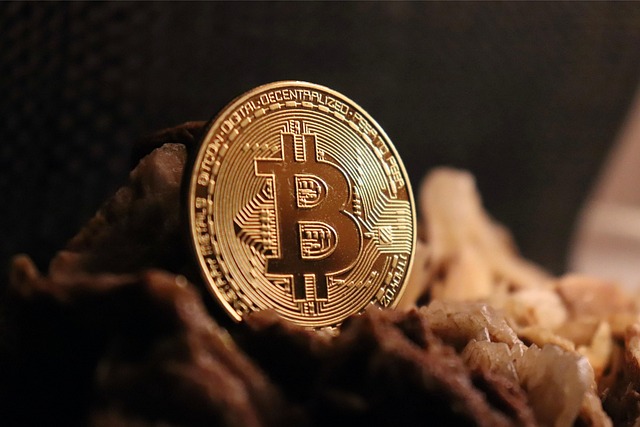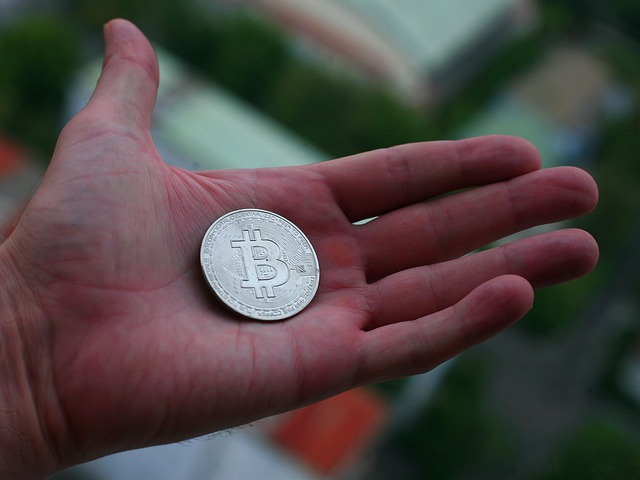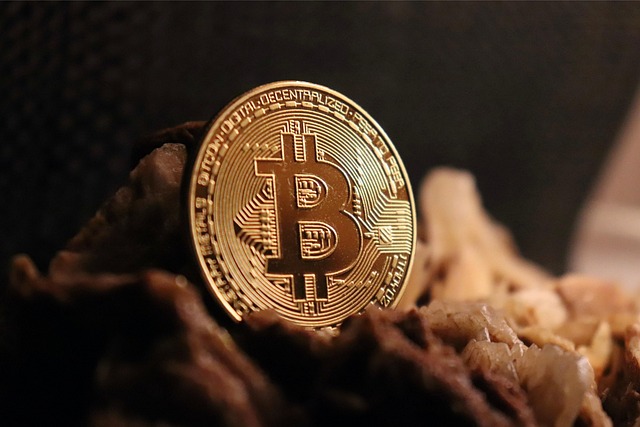SEC drops suit against Helium for alleged securities violations
The US Securities and Exchange Commission (SEC) has dismissed a lawsuit against Nova Labs, developer of decentralized wireless network Helium, for allegedly issuing unregistered securities, Helium stated in an April 10 blog post. Filed in January 2025, the lawsuit was among the SEC’s final enforcement actions against a cryptocurrency developer under former Chair Gary Gensler, who stepped down from his post on Jan. 20 after US President Donald Trump took office. The dismissal with prejudice means the blockchain developer cannot be charged with similar violations again for issuing in 2019 its native token Helium (HNT), the company said. “[W]e can now definitively say that all compatible Helium Hotspots and the distribution of HNT, IOT, and MOBILE tokens through the Helium Network are not securities,” Helium said. “[T]he outcome establishes that selling hardware and distributing tokens for network growth does not automatically make them securities in the eyes of the SEC [and] that the SEC cannot bring these charges against Helium again,” it added.Source: HeliumThe SEC’s Helium reversal came the same day Trump-nominee Paul Atkins formally replaced Gensler as SEC Chair after a lengthy confirmation process in the Senate. Helium is a blockchain network designed to let “anyone build and own massive wireless networks,” according to its website. The protocol reports having roughly 375,000 active hotspots. According to CoinGecko, HNT has a market capitalization of approximately $480 million as of April 10 — down from highs of more than $5 billion in November 2021. HNT’s price since 2019. Source: CoinGeckoRelated: SEC will drop its appeal against Ripple, CEO Garlinghouse saysChanging policy stanceUnder Gensler, the SEC brought upward of 100 charges against Web3 developers for various alleged securities violations. Since Trump took office, the SEC has sharply reversed course, dropping numerous charges against crypto firms, including Coinbase, Kraken, Ripple and Uniswap. Trump has positioned himself as a pro-crypto President, promising to make America the “world’s crypto capital,” appointing industry-friendly leaders to key regulatory posts, and ordering the federal government to create a national Bitcoin (BTC) reserve.For some crypto executives, Trump’s policies — such as announcing sweeping tariffs on US imports in April — threaten to stymie crypto’s progress.Magazine: 3 reasons Ethereum could turn a corner: Kain Warwick, X Hall of Flame
Bitcoin traders’ sentiment shift points to next step in BTC halving cycle
Bitcoin’s (BTC) four-year cycle, anchored around its halving events, is widely recognized as a key factor in BTC’s year-over-year price growth. Within this larger framework, traders have come to expect distinct phases: accumulation, parabolic rallies, and eventual crashes. Throughout the four-year period, shorter-duration cycles also emerge, often driven by shifts in market sentiment and the behavior of long- and short-term holders. These cycles, shaped by the psychological patterns of market participants, can provide insights into Bitcoin’s next moves.Bitcoin whales eat as markets retreatLong-term Bitcoin holders — those holding for three to five years — are often considered the most seasoned participants. Typically wealthier and more experienced, they can weather extended bear markets and tend to sell near local tops. According to recent data from Glassnode, long-term holders distributed over 2 million BTC in two distinct waves during the current cycle. Both waves were followed by strong reaccumulation, which helped absorb sell-side pressure and contributed to a more stable price structure. Currently, long-term Bitcoin holders are in the new accumulation period. Since mid-February, this cohort’s wealth increased sharply by almost 363,000 BTC.Total BTC supply held by long-term holders. Source: GlassnodeAnother cohort of Bitcoin holders often seen as more seasoned than the average market participant are whales—addresses holding over 1,000 BTC. Many of them are also long-term holders. At the top of this group are the mega-whales holding more than 10,000 BTC. Currently, there are 93 such addresses, according to BitInfoCharts, and their recent activity points to ongoing accumulation.Glassnode data shows that large whales briefly reached a perfect accumulation score (~1.0) in early April, indicating intense buying over a 15-day period. The score has since eased to ~0.65 but still reflects consistent accumulation. These large holders appear to be buying from smaller cohorts—specifically wallets with less than 1 BTC and those with under 100 BTC—whose accumulation scores have dipped toward 0.1–0.2. This divergence signals growing distribution from retail to large holders and marks potential for future price support (whales tend to hold long-time). Oftentimes, it also precedes bullish periods.The last time mega-whales hit a perfect accumulation score was in August 2024, when Bitcoin was trading near $60,000. Two months later, BTC raced to $108,000.BTC trend accumulation score by cohort. Source: GlassnodeShort-term holders are heavily impacted by market sentimentShort-term holders, usually defined as those holding BTC for 3 to 6 months, behave differently. They’re more prone to selling during corrections or periods of uncertainty. This behavior also follows a pattern. Glassnode data shows that spending levels tend to rise and fall approximately every 8 to 12 months. Currently, short-term holders’ spending activity is at a historically low point despite the turbulent macro environment. This suggests that so far, many newer Bitcoin buyers are choosing to hold rather than panic-sell. However, if the Bitcoin price drops further, short-term holders may be the first to sell, potentially accelerating the decline.BTC short-term holders’ spending activity. Source: GlassnodeMarkets are driven by people. Emotions like fear, greed, denial, and euphoria don’t just influence individual decisions — they shape entire market moves. This is why we often see familiar patterns: bubbles inflate as greed takes hold, then collapse under the weight of panic selling. CoinMarketCap’s Fear & Greed Index illustrates this rhythm well. This metric, based on several market indicators, typically cycles every 3 to 5 months, swinging from neutral to either greed or fear.Since February, market sentiment has remained in the fear and extreme fear territory, now worsened by US President Donald Trump’s trade war and the collapse in global stock market prices. However, human psychology is cyclical, and the market might see a potential return to a “neutral” sentiment within the next 1-3 months.Fear & Greed Index chart. Source: CoinMarketCapPerhaps the most fascinating aspect of market cycles is how they can become self-fulfilling. When enough people believe in a pattern, they start acting on it, taking profits at expected peaks and buying dips at expected bottoms. This collective behavior reinforces the cycle and adds to its persistence.Bitcoin is a prime example. Its cycles may not run on precise schedules, but they rhyme consistently enough to shape expectations — and, in turn, influence reality.This article does not contain investment advice or recommendations. Every investment and trading move involves risk, and readers should conduct their own research when making a decision.
Tariffs, capital controls could fragment blockchain networks — Execs
Escalating geopolitical tensions threaten to balkanize blockchain networks and restrict users’ access, crypto executives told Cointelegraph. On April 9, US President Donald Trump announced a pause in the rollout of tariffs imposed on certain countries — but the prospect of a global trade war still looms, especially because Trump still wants to charge a 125% levy on Chinese imports. Industry executives said they fear a litany of potential consequences if tensions worsen, including disruptions to blockchain networks’ physical infrastructure, regulatory fragmentation, and censorship. “Aggressive tariffs and retaliatory trade policies could create obstacles for node operators, validators, and other core participants in blockchain networks,” Nicholas Roberts-Huntley, CEO of Concrete & Glow Finance, told Cointelegraph. “In moments of global uncertainty, the infrastructure supporting crypto, not just the assets themselves, can become collateral damage.”According to data from CoinMarketCap, cryptocurrency’s total market capitalization dropped approximately 4% on April 10 as traders weighed conflicting messages from the White House on tariffs amid a backdrop of macroeconomic unease. Crypto’s market cap retraced on April 10. Source: CoinMarketCapRelated: Trade tensions to speed institutional crypto adoption — ExecsBitcoin’s vulnerabilitiesBitcoin (BTC) is especially vulnerable to a trade war since the network depends on specialized hardware for Bitcoin mining, such as the ASIC chips used to solve the network’s cryptographic proofs. “Tariffs disrupt established ASIC supply chains,” David Siemer, CEO of Wave Digital Assets, told Cointelegraph. Chinese manufacturers such as Bitmain are key suppliers for miners.However, “the greater threat is the erosion of blockchain’s core value proposition—its global, permissionless infrastructure,” Siemer said. This could be especially problematic for everyday crypto holders. “If global trade breaks down and capital controls tighten, it may become harder for citizens in restrictive countries to acquire bitcoin,” said Joe Kelly, CEO of Unchained. “Governments could crack down on exchanges and on-ramps, making accumulation and usage more difficult,” Kelly added.Bitcoin’s performance versus stocks. Source: 21SharesIronically, these types of fears also underscore the importance of cryptocurrencies and decentralized blockchain networks, the executives said. Bitcoin has already shown “signs of resilience” amid the market turbulence, highlighting the coin’s role in hedging against geopolitical risks. “While the environment is challenging, it also creates an opening for crypto to prove its long-term value and utility on the global stage,” noted Fireblocks’ executive Neil Chopra.Magazine: Memecoin degeneracy is funding groundbreaking anti-aging research
Jack Dorsey's Block fined $40M for alleged crypto compliance, AML failures
Digital payments company Block Inc. has reached a $40 million settlement with New York regulators over alleged compliance misconducts tied to its Cash App platform, Bloomberg reported on April 10.Block was fined by the New York Department of Financial Services (NYDFS) following an investigation into Cash App’s Anti-Money Laundering (AML) and cryptocurrency compliance operations, Bloomberg said after reviewing the government agency’s consent order. NYDFS determined that Block allegedly violated consumer protection laws and didn’t conduct proper due diligence on its customers. The company was allegedly too slow in reporting suspicious transactions to regulators and failed to adequately screen so-called “high-risk” Bitcoin (BTC) transactions. Block confirmed that it had worked with NYDFS to “resolve the matter principally related to Cash App’s past compliance program.” However, it did not admit to any wrongdoing, according to Bloomberg. Block, which was founded by internet entrepreneur and Bitcoin advocate Jack Dorsey in 2009, had been negotiating a settlement with the NYDFS since last year, based on filings submitted with the US Securities and Exchange Commission (SEC).Excerpts of Block Inc.’s February Form 10K filing with the SEC. Source: SECThe NYDFS settlement isn’t the first monetary penalty Block has agreed to pay this year. As Cointelegraph reported, the company paid $80 million in fines to several state regulators over alleged violations tied to its AML program.Related: NYDFS chief’s advice for crypto firms: ‘Never surprise your regulator’Block remains in growth modeDespite getting caught in regulatory crosshairs, Block’s underlying business remained strong at the end of 2024. Companywide revenues increased by roughly 4.5% year-over-year to $6.03 billion as per-share earnings climbed 51% to $0.71. The other positive takeaway was that Block’s merchant gross payment volume, or the total amount of money processed through its systems, increased by 10% to $61.95 billion. Cash App continues to be a source of growth, with the unit recording $1.38 billion in gross profit in the fourth quarter. The mobile payment service had more than 57 million monthly transacting users in early 2024. Despite reporting strong growth, Block Inc.’s (XYZ) share price has fallen more than 37% this year as part of a marketwide sell-off. Source: Yahoo FinanceCash App users have been able to buy Bitcoin through the platform since at least 2018. In 2023, Cash App integrated crypto accounting software TaxBit, giving users an easier way to track and report their crypto-related taxes. Magazine: Bitcoin heading to $70K soon? Crypto baller funds SpaceX flight: Hodler’s Digest, March 30 – April 5
Spot Bitcoin ETFs see $772M outflow as investors prepare for tariff-driven inflation
Bitcoin (BTC) spot exchange-traded funds (ETFs) faced significant pressure amid uncertainty caused by the ongoing global trade war. Between March 28 and April 8, these ETFs experienced net outflows totaling $595 million, according to Farside Investors data. Notably, even after most US import tariffs were temporarily lifted on April 9, the funds still recorded an additional $127 million in net outflows.This situation has left traders questioning the reasons behind the continued outflows and why Bitcoin’s rally to $82,000 on April 9 failed to boost confidence among ETF investors.Spot Bitcoin ETF net flows. Source: Farside InvestorsCorporate credit risk could be driving investors away from BTCOne factor contributing to diminished interest is the rising likelihood of an economic recession. “What you can clearly observe is that liquidity on the credit side has dried up,” Lazard Asset Management global fixed income co-head Michael Weidner told Reuters. Essentially, investors are shifting toward safer assets like government bonds and cash holdings, a trend that could ultimately lead to a credit crunch.A credit crunch is a sharp decline in loan availability, leading to reduced business investment and consumer spending. It can happen regardless of US Treasury yields because heightened borrower risk perceptions may independently restrict credit supply.RW Baird strategist Ross Mayfield noted that even if the US Federal Reserve decides to cut interest rates in an effort to stabilize turbulent markets, any relief for companies might be short-lived. Mayfield reportedly stated: “In a stagflationary environment from tariffs, you’ll see both investment grade and high yield corporate borrowers struggle as their costs of debt rise.” Despite the 10-year US Treasury yield remaining flat compared to the previous month, investor appetite for corporate debt remains weak.ICE Bank of America Corporate Index option-adjusted spread. Source: TradingView / CointelegraphDan Krieter, director of fixed income strategy at BMO Capital Markets, told Reuters that corporate bond spreads have experienced their largest one-week widening since the regional banking crisis in March 2023. Corporate bond spreads measure the difference in interest rates between corporate bonds and government bonds, reflecting the additional risk investors take when lending to companies.Related: Bitwise doubles down on $200K Bitcoin price prediction amid trade tensionTrade war takes center stage, limiting investor interest in BTCInvestors remain concerned that even if the US Federal Reserve cuts interest rates, it may not be enough to restore confidence in the economy. This sentiment also explains why the US Consumer Price Index (CPI) for March—at 2.8%, its slowest annual increase in four years—failed to positively impact stock markets. “This is the last clean print we’re going to see before we get those tariff-induced inflation increases,” Joe Brusuelas, RSM chief economist, told Yahoo Finance.Traders appear to be waiting for stabilization in the corporate bond market before regaining confidence in Bitcoin ETF inflows. As long as recession risks remain elevated, investors will likely favor safer assets such as government bonds and cash holdings. Breaking this correlation would require a shift in perception toward Bitcoin’s fixed monetary policy and censorship resistance. However, potential catalysts for such a change remain unclear and could take months or even years.This article is for general information purposes and is not intended to be and should not be taken as legal or investment advice. The views, thoughts, and opinions expressed here are the author’s alone and do not necessarily reflect or represent the views and opinions of Cointelegraph.
Ether ETF staking could come as soon as May — Bloomberg analyst
Ether exchange-traded funds (ETFs) in the United States may be able to start staking a portion of their tokens as soon as May, according to Bloomberg Intelligence analyst James Seyffart. On April 9, the US Securities and Exchange Commission (SEC) authorized exchanges to begin listing options contracts tied to spot Ether (ETH) ETFs after greenlighting Bitcoin (BTC) ETF options in September. However, issuers are still waiting for the regulator to allow Ether ETFs to offer staking after filing numerous requests for permission earlier this year.Source: James SeyffartThe approval of options contracts could represent a key step toward regulatory approval for staking services in the United States. Bloomberg Intelligence analyst James Seyffart said on April 9 that clearance for staking on ETH funds could come as early as May but would likely take until the end of 2025.“It’s possible they could be approved for staking early, but the final deadline is at the end of October,” Seyffart said in a post on the X platform. “Potential intermediate deadlines before the final approval (or denial) are in late May & late August.”Options are financial derivatives that give investors the right, but not the obligation, to buy or sell an asset at a predetermined price before a certain date. Staking, on the other hand, involves locking up a cryptocurrency, like ETH, to support network operations — such as validating transactions — in exchange for rewards. In ETH funds, options contracts allow investors to hedge or speculate on the tokens’ prices, while staking offers a way to earn rewards by participating in Ethereum’s proof-of-stake network.Ether ETF inflows. Source: Farside InvestorsRelated: SEC approves options on spot Ether ETFsProgress toward adoptionEther ETFs launched in June 2024 but struggled to attract significant investor interest. According to data from Farside Investors, the funds have seen net inflows of $2.4 billion as of April 10, compared to $35 billion for Bitcoin ETFs introduced in January. Analysts say the SEC’s approval of Ether ETF options could help spur adoption. Asset managers are also waiting on the SEC to greenlight requests to allow in-kind creations and redemptions for Bitcoin and Ether ETFs.The emergence of options markets tied to spot crypto ETFs is a “monumental advancement” in crypto markets and creates “extremely compelling opportunities” for investors,” Jeff Park, Bitwise Invest’s head of alpha strategies, said in a Sept. 20 X post. But staking could be the most significant step forward for Ether funds. In March, Robbie Mitchnick, BlackRock’s head of digital assets, said Ether ETFs are “less perfect” without staking. “A staking yield is a meaningful part of how you can generate investment return in this space.”Magazine: Memecoin degeneracy is funding groundbreaking anti-aging research
Atomic, Exodus wallets targeted in new cybersecurity exploit
Users of the Atomic and Exodus wallets are being targeted by threat actors uploading malicious software packages to online coding repositories to steal crypto private keys in the latest cybersecurity threat identified by security professionals. According to cybersecurity researchers at ReversingLabs, the exploit works by hiding malicious code in seemingly legitimate npm software packages, which are pre-built bundles of code widely used by software developers.These malicious software packages target locally installed Atomic Wallet and Exodus Wallet files by installing a patch that overwrites the files to compromise the user interface and fool the unsuspecting victim into sending crypto to scam addresses.Software supply chain attacks are an emerging threat vector targeting crypto holders as the industry continues to play a cat-and-mouse game with hackers attempting to steal user funds using increasingly sophisticated methods to avoid detection.The malicious code contained in the pdf-to-office package. Source: ReversingLabsRelated: $2B lost to crypto hacks in Q1 2025, $1.63B from access control flawsHackers target crypto community in increasingly sophisticated attacksAccording to cybersecurity firm Hacken, crypto hacks and exploits cost the industry roughly $2 billion in losses during Q1 2025, most of which came from the $1.4 billion Bybit hack in February.The SafeWallet developer released a post-mortem update in March 2025 outlining a forensic analysis of the single biggest hack in crypto history.SafeWallet’s analysis ultimately found that a Safe developer’s computer was compromised by hackers who hijacked the developer’s Amazon Web Services session tokens to access the firm’s development environment and set up the Bybit attack.Jameson Lopp, a cypherpunk and chief security officer at Bitcoin (BTC) custody company Casa, recently sounded the alarm on BTC address poisoning attacks.A breakdown of the losses caused by crypto hacks and exploits in Q1 2025. Source: HackenAddress poisoning attacks target victims by generating destination addresses that match the first four and the last four characters of an address from the victim’s transaction history.The threat actor then sends a transaction from the malicious address for a small amount, typically below one dollar, to the target so that the address will show up in a victim’s transaction history.If the victim is not paying attention by carefully examining the entire address, they may mistakenly send funds to the malicious address, which closely resembles the destination.Cybersecurity firm Cyvers estimates that address poisoning attacks were responsible for $1.2 million in stolen funds in March 2025 alone.Magazine: $55M DeFi Saver phish, copy2pwn hijacks your clipboard: Crypto Sec
Bitcoin, stocks shun CPI print win and give up tariff relief gains — Will BTC whales save the day?
Bitcoin (BTC) price failed to hold its weekly open gains on April 10 as US stocks ignored positive inflation data.BTC/USD 1-hour chart. Source: Cointelegraph/TradingViewData from Cointelegraph Markets Pro and TradingView showed BTC price volatility ticking higher around the release of the March Consumer Price Index (CPI) numbers.These numbers came in broadly below expectations, revealing slowing inflationary forces despite mass-market disruption due to US trade tariffs.An official press release from the US Bureau of Labor Statistics (BLS) stated:“The all items index rose 2.4 percent for the 12 months ending March, after rising 2.8 percent over the 12 months ending February. The all items less food and energy index rose 2.8 percent over the last 12 months, the smallest 12-month increase since March 2021.”US CPI 12-month % change. Source: BLSWhile notionally a tailwind for risk assets, US stocks were in no mood for relief at the open. The S&P 500 and Nasdaq Composite Index were down 3% and 3.7%, respectively, at the time of writing.“Markets think the recently strong jobs report and cool inflation data gives Trump the ‘green light’ to continue the trade war,” trading resource The Kobeissi Letter suggested in part of a response on X.Kobeissi nonetheless acknowledged the implications of rapidly declining inflation — something which tariffs had yet to influence.“This marks the lowest Core CPI inflation rate in 4 years,” it continued in a separate X thread. “It also puts Headline CPI inflation just 40 basis points above the Fed’s 2% target. Inflation is down 60 basis points over the last 3 months alone.”BTC price rebound may rest with ”Spoofy the Whale”Turning to BTC price action, market participants were in a wait-and-see mode after the US paused the majority of its tariff implementations for 90 days.Related: Crypto trading firm warns of ‘classic bull trap’ as Bitcoin tags $82.7KFor popular trader Daan Crypto Trades, a reclaim of at least $83,000 was necessary as an initial step for bulls.“$BTC Saw a strong move after the tariff pause was announced,” he told X followers.“Where BTC was more resilient on the downside, we saw equities pump more on the back of this pause (which makes sense as those are directly influenced by the tariffs).”An accompanying chart showed nearby key trend lines around the spot price.“BTC traded right back into the 4H 200MA (Purple) which has capped price over the past couple of weeks. That $83-85K is a key level to overtake for the bulls,” he continued.“Right below we can see the ~$81.1K horizontal being a key level that sees quite a lot of action. I think it’s a good one to watch in the short term. Trading below that area could turn this into a nasty deviation/stop hunt.”BTC/USDT perpetual swaps 4-hour chart. Source: Daan Crypto Trades/XAnalyzing order book liquidity, Keith Alan, co-founder of trading resource Material Indicators, drew attention to both the 21-day and 50-day simple moving averages (SMA) on the daily chart.“First attempt at breaking resistance at the 21-Day MA was rejected, however BTC bid liquidity is moving higher so I think we’ll see another attempt,” he summarized earlier on the day. “If bulls can R/S Flip the 21-Day, there is even stronger resistance where liquidity is stacked around the trend line and the 50-Day MA.”BTC/USD 1-day chart with 21, 50 SMA. Source: Cointelegraph/TradingViewAlan reiterated the role of large-volume traders shifting liquidity above and below Bitcoin’s spot price to influence price action. The actions of one entity in particular, which he previously dubbed “Spoofy the Whale,” remained a point of consideration.“If ‘Spoofy’ will give us a roof pull, we’ll get a shot at the 100-Day and the 2025 open at $93.3k, which is the gateway back to 6-figure Bitcoin,” he concluded.BTC/USDT order book liquidity data. Source: Keith Alan/XThis article does not contain investment advice or recommendations. Every investment and trading move involves risk, and readers should conduct their own research when making a decision.








